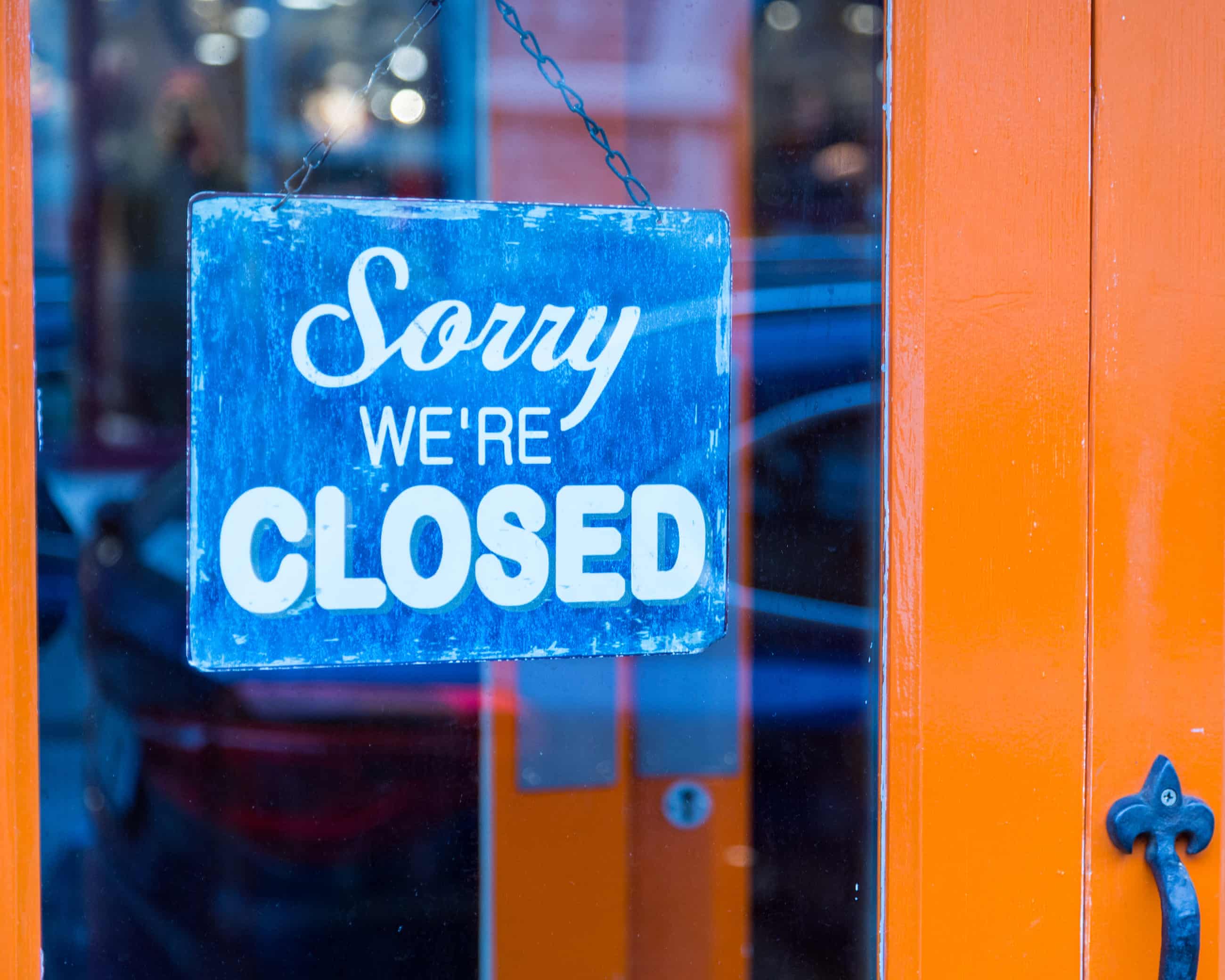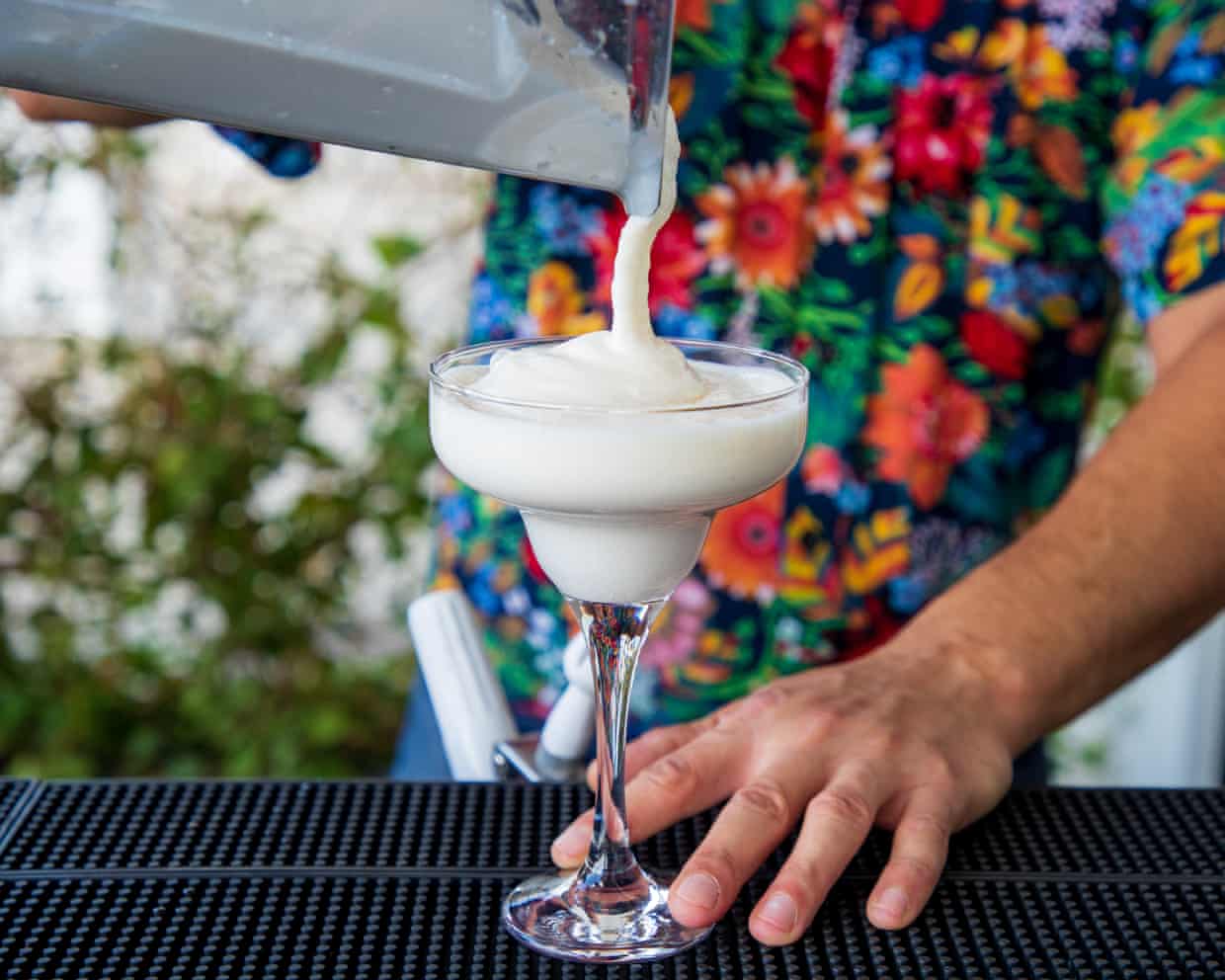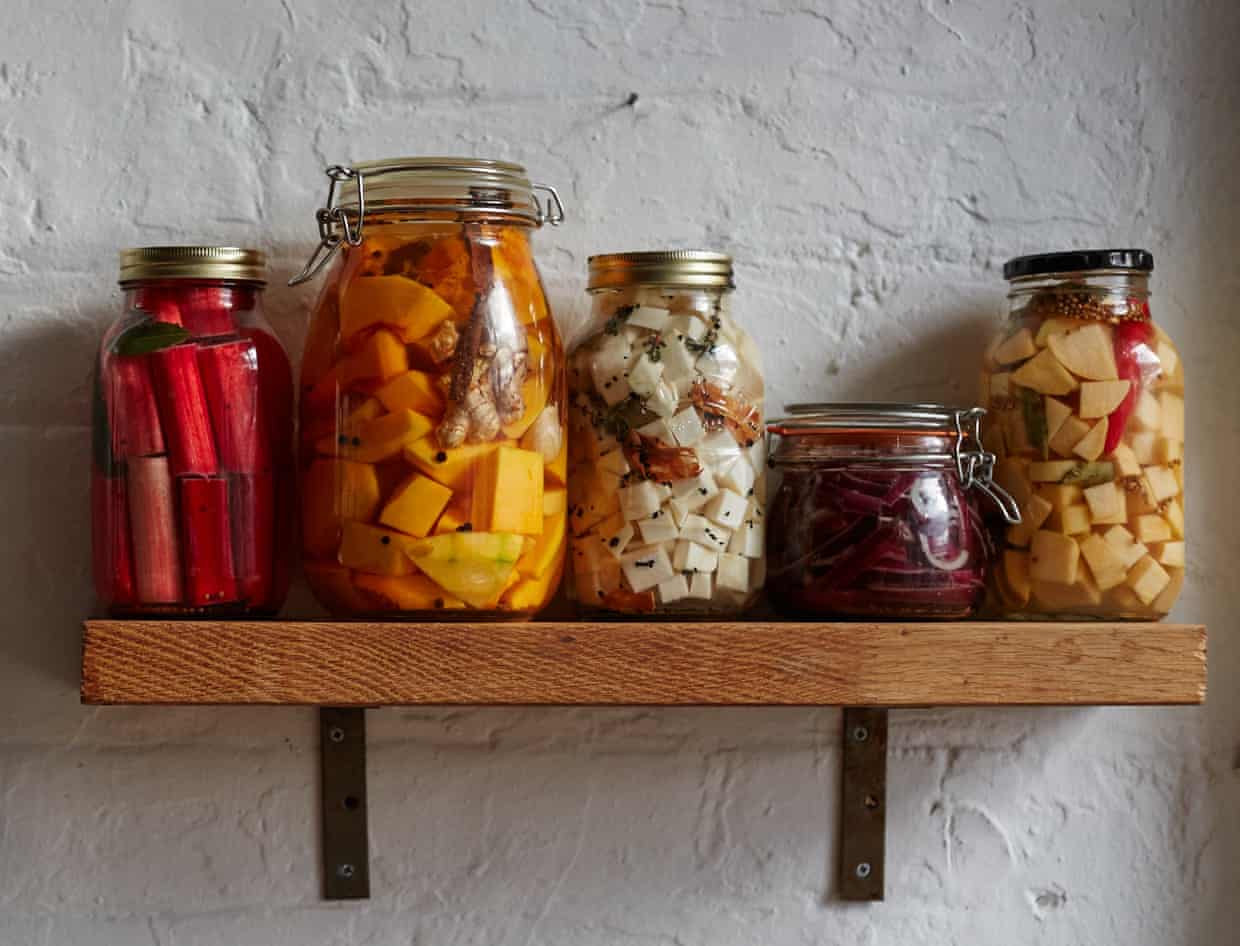Amazon strategised about keeping its datacentres’ full water use secret, leaked document shows

Executives at world’s biggest datacenter owner grappled with disclosing information about water used to help power facilitiesAmazon strategised about keeping the public in the dark over the true extent of its datacentres’ water use, a leaked internal document reveals.The biggest owner of datacentres in the world, Amazon dwarfs competitors Microsoft and Google and is planning a huge increase in capacity as part of a push into artificial intelligence.The Seattle firm operates hundreds of active facilities, with many more in development despite concerns over how much water is being used to cool their vast arrays of circuitry.Amazon defends its approach and has taken steps to manage how efficient its water use is, but it has faced criticism over transparency.Microsoft and Google regularly publish figures for their water consumption, but Amazon has never publicly disclosed how much water its server farms consume.
When designing a campaign for water efficiency, the company’s cloud computing division chose to account for only a smaller water usage figure that does not include all the ways its datacentres use water so as to minimise the risk to its reputation, according to a leaked memo seen by SourceMaterial and the Guardian,Amazon as a whole consumed 105bn gallons of water in total in 2021, as much as 958,000 US households, which would make for a city bigger than San Francisco, according to the memo,Asked about the leaked document, Amazon spokesperson Margaret Callahan described it as “obsolete” and said it “completely misrepresents Amazon’s current water usage strategy”,“A document’s existence doesn’t guarantee its accuracy or finality,” she said,“Meetings often reshape documents or reveal flawed findings or claims.
” Callahan would not elaborate on which strategic elements of the document were “obsolete”.The memo was dated one month before Amazon Web Services (AWS), the company’s cloud computing division, debuted a new sustainability campaign in November 2022 called “Water Positive”, with a commitment to “return more water than it uses” by 2030.In the memo, ahead of the campaign’s launch, executives grappled with whether to include public disclosures about “secondary” use – water used in generating the electricity to power its datacentres.They warned that full transparency was “a one-way door” and advised keeping AWS’s projections confidential, even as they feared that their advice could invite accusations of a cover-up.“Amazon hides its water consumption” was one negative headline the authors anticipated.
Callaghan said efficiency savings have already been achieved and pointed out that other companies also don’t count secondary water use.Executives opted to use only the relatively smaller figure of primary use, 7.7bn gallons per year, roughly equivalent to 11,600 Olympic swimming pools, when calculating progress towards internal targets because of “reputational risk”, fearing bad publicity if the full scale of Amazon’s consumption was revealed, the document shows.Ultimately as part of the campaign for water efficiency, Amazon aimed to cut its estimated 7.7bn gallon primary consumption to 4.
9bn by 2030 – without addressing secondary use.Using the higher of two water usage estimates, the one that would include secondary use, “would double the size and budget” of the campaign “without addressing meaningful operational, regulatory or reputational risks”, they warned, adding that there was “no focus from customers or media” on water used for electricity.“We may decide to release water volumes in the future,” the document said.“But … we should only do so if the lack of data undermines the programme or is required by regulators.”Scientists balked at the selective disclosure and the choice not to include secondary use of water in the total.
“In environmental science, it is standard practice to include both to more accurately capture the true water cost of datacentres,” said Shaolei Ren, associate professor of electrical and computer engineering at the University of California, Riverside.Amazon’s Water Positive campaign is still active and does not take into account secondary use, while the company continues to keep its current overall water consumption confidential.As US tech companies ride the wave of AI investment and pursue greater heights of computational power, the $2.4tn corporation is building new datacentres in some of the world’s driest areas, SourceMaterial and the Guardian revealed in April.In November 2022, AWS debuted its new Water Positive sustainability campaign, with a commitment to “return more water than it uses by 2030”.
The campaign only applies to AWS.The wider Amazon group, including the world’s biggest online retail business, has an overall water consumption that is far higher, 105bn gallons per year.“The models referenced in this document were preliminary and unvetted,” said Amazon’s Callahan, who declined to provide any alternative figures.The document’s authors advised the company not to release data about the wider company, but they also warned that selective disclosure could lead to accusations of a cover-up.There was “reputational risk of publicly committing to a goal for only a portion of Amazon’s direct water footprint”, they wrote.
They even suggested negative headlines that might result including “Amazon disappoints, failing to take full responsibility for water”.“It would be better if they could own up to it,” said a current Amazon software developer, who asked to remain anonymous for fear of retaliation.“Even if they said it was a low priority, at least that would be honest.”In a sustainability report in August, AWS claimed it had achieved 53% of its Water Positive goal.The division’s plan for reaching the target relies mostly on “water replenishment” projects, some in partnership with Water.
org, a non-profit organisation co-founded by actor Matt Damon.The strategy document refers to these projects as “offsets”, describing initiatives like using Amazon computer technology to help utilities prioritise which pipes to fix in order to minimise leaks.Sign up to TechScapeA weekly dive in to how technology is shaping our livesafter newsletter promotionBut of the $109m AWS planned to spend on offsets, around half would have been spent anyway, either to meet regulatory requirements or because the projects would help AWS operations by making water more available, the document shows.Experts said this amounted to incomplete accounting.“Regardless of what sort of offsetting or replenishment you do, it doesn’t necessarily nullify the water footprints of your own operations,” said Tyler Farrow, standards manager at the Alliance for Water Stewardship.
“Calling your operations water positive or water neutral is misleading.”Amazon’s Callahan said that the “replenishment spending”, which other tech companies also undertake, is a voluntary, not a regulatory, requirement.“We’ve expanded well beyond what was imagined in the document because it’s the right thing to do for the world and for the communities in which we operate,” she said.Amazon is also engineering industry standards to downplay its water use and avert scrutiny, said Nathan Wangusi, a former water sustainability manager at the company.The corporation has funded efforts by the Nature Conservancy and the World Resources Institute non-profits, alongside LimnoTech, a consultancy, “to create a globally accepted methodology for quantifying the benefit of watershed restoration projects”.
Responding to questions from SourceMaterial, all three organisations defended their integrity and independence, insisting that Amazon had no undue influence on any methodologies they had created.“They spend a lot of time creating methodologies that are used to obfuscate the water footprint,” Wangusi said, referring to Amazon.Callahan said Wangusi’s claim was “contradicted by facts”.“Amazon’s water use reporting is based on third-party assured data from actual utility bills, not estimates or self-reporting,” she said.Wangusi’s claim, though, was not about Amazon’s water-use reporting, but about measuring the effects of water offsets.
Callahan said these efforts were “standard practice” and that Amazon’s “customers expect us to hold ourselves accountable to credible guidance and best practices”.As well as choosing not to disclose water use from electricity generation, Amazon has estimated its larger “indirect” water footprint, the document shows.This extra usage, which falls under a classification known as “scope 3”, includes water for production and construction – in Amazon’s case, mostly irrigation of cotton plantations supplying its fashion brands, and vegetables for its grocery arm, Amazon Fresh.Here, too, Amazon decided to keep its consumption confidential, even though “indirect water use represents roughly 90% of Amazon’s total water footprint”, according to the document.AWS avoided establishing targets for indirect water use because that figure would be “much more significant for the rest of Amazon, especially in the agricultural supply chain, and the team does not want to establish a standard for addressing scope 3 water use that the rest of Amazon would need to follow, given the larger resource implications”, the authors wrote.
“You don’t need to obscure or obfuscate,” said Wangusi, who believes he was “hounded out” of Amazon for criticising the company’s approach,(Amazon declined to comment on his departure,)“It doesn’t make you more profitable,” he said,“It makes you less trustworthy,”The best public interest journalism relies on first-hand accounts from people in the know.
If you have something to share on this subject, you can contact us confidentially using the following methods.Secure Messaging in the Guardian appThe Guardian app has a tool to send tips about stories.Messages are end to end encrypted and concealed within the routine activity that every Guardian mobile app performs.This prevents an observer from knowing that you are communicating with us at all, let alone what is being said.If you don't already have the Guardian app, download it (iOS/Android) and go to the menu.
Select ‘Secure Messaging’.SecureDrop, instant messengers, email, telephone and postIf you can safely use the Tor network without being observed or monitored, you can send messages and documents to the Guardian via our SecureDrop platform.Finally, our guide at theguardian.com/tips lists several ways to contact us securely, and discusses the pros and cons of each.

Rachel Roddy’s recipe for leftover polenta biscuits | A kitchen in Rome
This, then, was the situation: it was Friday night after a long week, and having met a friend on the way home for a glass of wine, which arrived with crisps, taralli, dry roasted peanuts and enough salt that we needed another glass, it seemed a good idea to go home and cook polenta – the long-stir sort as opposed to the instant variety, although I always have that in the cupboard, too. Another good idea, which came to me as I pulled a new packet from the back of the dresser and ignored the flutter of tiny wings, was to make more than enough polenta and pour the extra into a Pyrex dish while it was still hot, so it could set into a block to be cut into slices and grilled the next day.I’ve written about polenta before; how the word is ancient and generic – referring to any mushy dish made from cereal flour and water – and how, after its arrival in Europe in the 1600s, it became synonymous with ground maize. There exists a world of different grades and milling, but, broadly speaking, when you buy ground maize (cornmeal) for polenta, you will have two options: finely ground (which might also be white) for a soft, thin polenta, and coarsely ground, which will have glassy-looking grains and makes an excellent body scrub and a harder, tastier polenta. The latter also takes much longer to cook, anything from 40 minutes to several hours, depending on who (or which packet) you consult, although in my experience an hour is almost always enough, and anything beyond that is more a way of deepening the flavour

Don’t chuck your parmesan rind – it is an excellent stock cube – recipe | Waste not
Parmesan rinds are the ultimate zero-waste hack – like a cheesy stock cube, they enrich stews, sauces and all sorts, and add pure deliciousness in the form of umami depth and creamy texture. Stored in the fridge or freezer, they keep almost indefinitely. This week’s recipe uses them in a thrifty, creamy corn orzo that transforms a few simple ingredients into comforting autumn fare.This dish was a happy accident, and left me and my family drooling for more. I was planning a classic tomato orzo to use up that half-bag in the cupboard left over from making a pasta salad, but wanted something more seasonal

No waste, all taste: Max La Manna’s comfort food pantry-raid recipes
Cooking with little to no waste isn’t about rules; it’s about rethinking old habits. Take inventory of the food you already have (I like taking a photo of my fridge and pantry before I go shopping), stick to your list and buy only what you need. Make sure you store it properly, too, so it lasts longer, and don’t forget to cook with a bit of curiosity: that bendy carrot, yesterday’s rice, the broccoli stem you’d normally bin – they all have potential. Start small, and trust me: you’ll notice the wins in no time, saving money, time and food from the bin. For me, low-waste cooking isn’t restrictive, it’s liberation

When restaurateurs go rogue: is it right to lambast locals who won’t come and dine with you?
An Italian restaurant shut up shop last week, with an angry and disappointed farewell note, blaming ‘neighbours’ for a lack of support ...Name: Unappreciative customers.Age: In the case of Don Ciccio, six years

If you like piña coladas: how to make slushies at home without a machine
It promises icy, refreshing drinks, and for a cool $179, this slushie maker is yours – if you can find one.Australian TikTok users have become fixated on a Kmart slushie machine, apparently a budget version of the equally viral Ninja slushie machine (RRP A$499), with users posting videos and reviews of their frosty, fruity extrusions. One Australian video has racked up 2.7m views, and the appliance has sold out online. But with Kmart supply chains under scrutiny and the knowledge that culinary trends and the very specific appliances needed to make them are passing fads, not everyone wants to – or has to – buy a machine to make slushies this summer

Pickle power: how to make your first ferments | Kitchen aide
I love ferments and want to start making my own to save money. Where should I start? Ben, by email“Maybe with some carrots, onions, cucumber or beetroot – anything Ben has an excess of,” says Connor Wilson, head chef at The Kirkstyle Inn in Slaggyford, Northumberland. “Fermentation is a great way of preserving produce, but it won’t give new life to things that are past their best.”That said, tired-looking carrots would be perfect for Olia Hercules’ go-to for newbie fermenters: “If they look dehydrated but without any rotting, they’re amazing to ferment,” says the author of Strong Roots. “The sugars concentrate and you get this bright carrot flavour

Cokanasiga on song to help Bath past Bristol in bruising West Country derby

Tyrone Green doubles up as rampant Harlequins soar above Newcastle

Ruthless Australia sweep England aside in one-sided Ashes Test at Wembley

England 6-26 Australia: rugby league Ashes first Test – as it happened

Australia beat South Africa by seven wickets: Women’s Cricket World Cup – as it happened

Rejuvenated Joe Root all revved up to end Ashes century drought in Australia